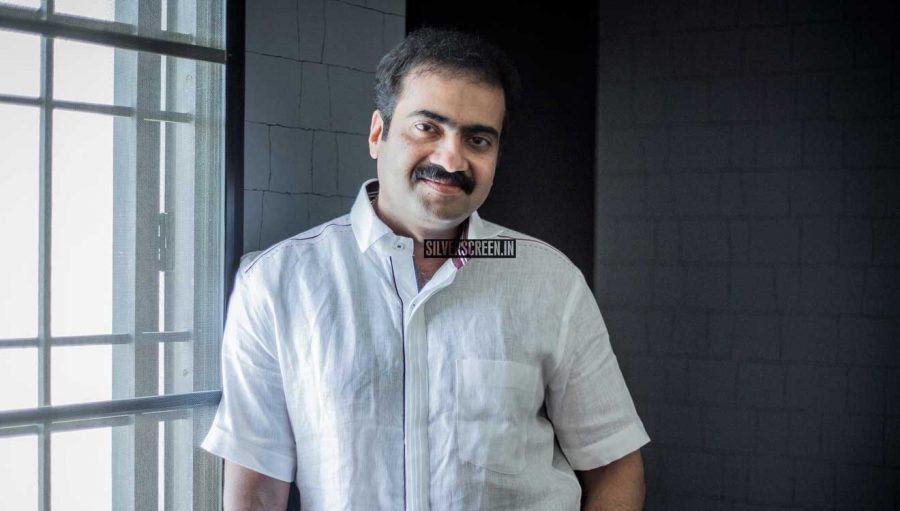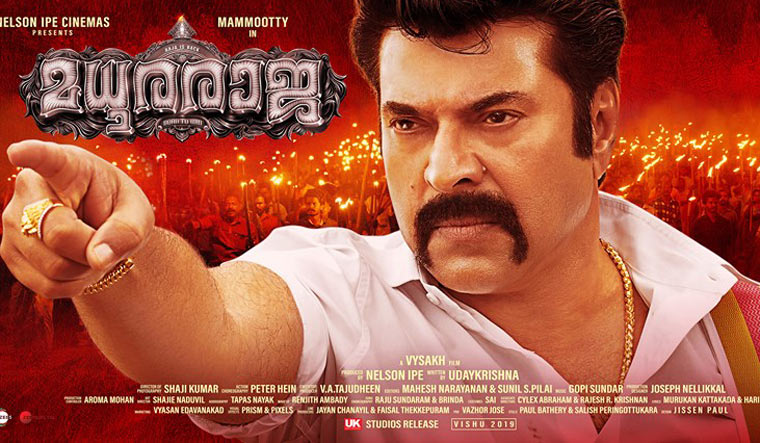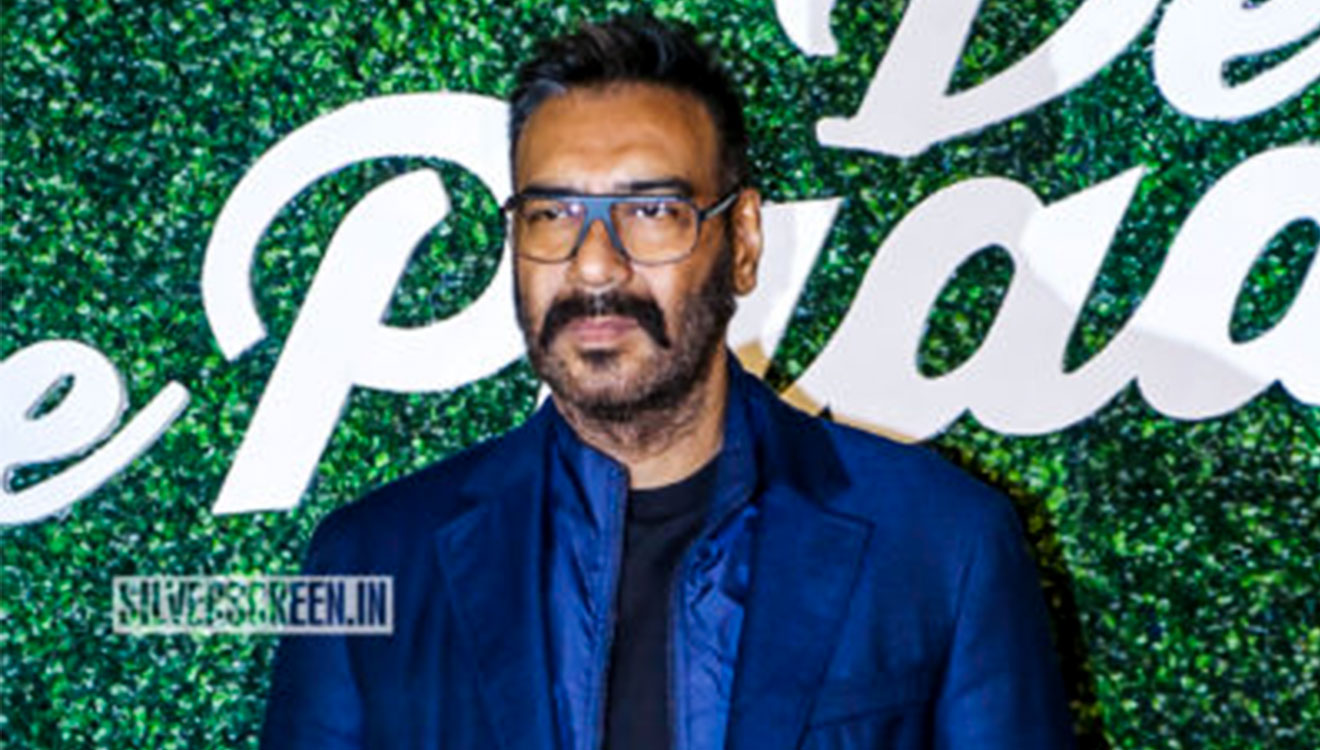In an in-depth conversation, MR Rajakrishnan, one of the busiest sound technicians in south Indian cinema, opens up to Silverscreen about the art of sound mixing, on why he prefers the use of sync sound to dubbing, and on why the industry should explore the scope of sound more.
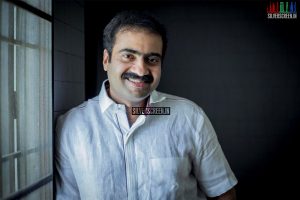 Rajakrishnan’s workplace is a dim-lit, movie hall–like studio, with giant speakers protruding out of the walls on all four sides, and the ceiling. He greets me cheerfully as I enter. He’s perched amid a myriad machines and computers. A Tamil movie he’s working on is on the huge screen in front. Noticing my curious look, he points towards a speaker on the far left and says, “I’m going to make that bird on the screen chirp from that point, the wind blow through the channel on your right, and fade through the speakers behind you. And add the sound of the rainfall from above.”
Rajakrishnan’s workplace is a dim-lit, movie hall–like studio, with giant speakers protruding out of the walls on all four sides, and the ceiling. He greets me cheerfully as I enter. He’s perched amid a myriad machines and computers. A Tamil movie he’s working on is on the huge screen in front. Noticing my curious look, he points towards a speaker on the far left and says, “I’m going to make that bird on the screen chirp from that point, the wind blow through the channel on your right, and fade through the speakers behind you. And add the sound of the rainfall from above.”
This is the man who has won the Kerala State Film Award twice. Who has worked on Tamil, Malayalam, Hindi, Kannada, Telugu, and Marathi films.
What do I call you? Sound recordist, sound designer, or sound mixer?
“My career began as a sound mixer. However, later on, I started designing as well. Now, I like doing both, designing and mixing, or mixing alone. In films like Kaaka Muttai, Bangalore Days, and Ustad Hotel, I did both, designing and mixing. In movies like Jigarthanda, I only mixed. Right now I’m working on a number of films, including Karthik Subbaraj’s Iraivi, where I handle the sound mixing.”
Sound, unlike other departments in cinema, has multiple sub-divisions – location recording, designing, editing, and mixing. This is apart from the playback music and background music categories.
Why did you decide to be a sound technician, and not a music director?
Raja Krishnan belongs to an illustrious music family in Kerala. His father, MG Radhakrishnan was one of the finest music composers in Malayalam cinema. His father’s sister Dr. Omanakutty is a renowned carnatic musician. His uncle MG Sreekumar is a popular playback singer who has worked in all four south Indian languages, and Bollywood.
“My father’s legacy, in a way, made me feel insecure in the beginning,” he smiles. “If I had stepped into music direction, everyone would have compared me with dad. He is an inimitable musician, and I can never achieve even half of what he did. I chose to be on the technical side of cinema because I was more interested in that. I got in touch with director Priyadarshan, who asked me to work in his sound studio as a trainee, under the national award-winning audiographer Deepan Chatterjee. He loved to bring authenticity to sound design. He always refused to compromise. He was ready to go to any length to get the sound he wanted. His work in Priyadarshan’s film Kilukkam is brilliant – he went all the way to Ooty to record the sound of a toy train. The detail he brought in his works is unique. Many of his films remain perfect textbooks for our generation. I assisted him for over four years.”
In cinema, are visuals perceived as more important than sound?
“Cinema uses light and sound to communicate with the audience. However, most people, viewers as well as filmmakers, don’t understand the importance of sound. The sound department has always been the most neglected, at both the scripting and the budget allocation stages. We rarely have an opportunity to prove our mettle. But, this attitude is gradually changing. Nowadays, directors send me scripts, and ask me to be a part of pre-production discussions. This improves the overall cinematic experience, and audiences can definitely feel the difference in the theatre.”
Why don’t we use sound scripts in our films?
“A sound script details what happens in a frame at the pre-production stage, from a sound designer’s perspective. Most south Indian films don’t do a sound script, even though it has become common practice in Bollywood these days. Here, directors and producers refuse to do a sound script, mostly because our suggestions could add to the budget,” he smiles. “For instance, if the script has an intense emotional scene, with two characters talking, the director might decide to shoot it inside a room, to save money, time, and effort. But that would make the scene bland, with minimum aural possibilities. Later, background scores will have to be added, in order to highlight the emotions. A sound designer would suggest that the scene be shot outside, in a windy area, perhaps. That would add to the intensity of the scene. Make it more aesthetically appealing and natural.”
Can you give us an example of a specific scene and how sounds impacted it?
“In Jigarthanda, there is a long, single shot which starts with Simha leaving a room, and ends with him walking to a lavatory. Director Karthik Subbaraj decided to make the scene more ‘happening’. So, Simha leaves the room. Walks past a theatre where a film is playing. Then we brought in some rain. There’s a play of different sounds in that scene – a generator, the movie playing inside a theatre, rainfall, the echo in the lavatory. I remember this scene because we rarely get to work with that kind of detail.”
The Malayalam film Premam had an interesting sound design and mix. How did you achieve that?
“If you felt the sound designing and mixing in Premam was seamless and interesting, it’s because it was planned to perfection and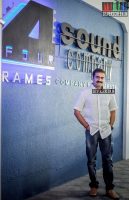 well-executed. I worked on the sound mixing, and a couple of extremely talented, enthusiastic youngsters, Vishnu Govind and Sree Sankar, worked on the design. I learned a lot from them. They spent almost two months in and around the film’s location, gathering sound tracks. I share a great rapport with director Alphonse Puthren. Our friendship began even before Neram happened. While I was mixing, Alphonse would sit near me with his eyes closed. He would tell me that even a blind person should be able to make out where the character stood in a frame. Alphonse is one of the few directors who has a grasp of all the elements in a film.
well-executed. I worked on the sound mixing, and a couple of extremely talented, enthusiastic youngsters, Vishnu Govind and Sree Sankar, worked on the design. I learned a lot from them. They spent almost two months in and around the film’s location, gathering sound tracks. I share a great rapport with director Alphonse Puthren. Our friendship began even before Neram happened. While I was mixing, Alphonse would sit near me with his eyes closed. He would tell me that even a blind person should be able to make out where the character stood in a frame. Alphonse is one of the few directors who has a grasp of all the elements in a film.
“Working with a director like Santhosh Sivan was also a fantastic experience. He is highly creative, and has a lot of ideas which might sound weird to others. When we were working in Ananthabhadram, he asked me to make ‘lamps talk’ on the screen. I was perplexed. It was a challenging experience to work in Ananthabhadram, and Urumi, which was a period drama.” Urumi and Ananthabhadram won him the Kerala State Awards.
“The mixing desk is where everything gets dumped in – the tastes, interests, and egos of everyone involved in the film, ranging from the director to the music director. My task is to sit patiently and refine everything, making it sound clean and disciplined.”
Why do we prefer dubbing to sync sound?
“Bollywood is slowly moving towards sync sound, but the south Indian industry is stuck with dubbing. Traditionally, we have heroines who don’t speak the native language. If we dub for just one actor, it would stick out. Even actors who can speak the language prefer dubbing because they’re used to it. Using sync sound doesn’t even cross their minds. Most artists think it’s difficult. If they actually use it, they would actually prefer it because it’s so much more effective.
“Sync sound is costlier because it needs enormous crew effort, planning, and time. The chances of things going wrong are higher. Everything, from adjusting the boom positions to keep it out of the frame, to controlling the crowd, can be challenging. Continuity errors can happen. An unexpected change in the weather can ruin the shoot. At least a kilometre around the shooting spot will need to be crowd-controlled. It’s not an easy task in a country like India, where people go crazy when they see a shoot and the stars.
“But I would, any day, prefer sync sound to dubbing. An actor always delivers his best at the shooting spot. The natural modulation, stress, and emotion he delivered while shooting a scene at the location can’t be replicated inside a dubbing theatre. I often hear directors asking an actor/actress to deliver a piece of dialogue the way they did at the location, and feeling disappointed when it doesn’t happen. The truth is, they never can.
“In Tamil, I did the audiography for Malai Pozhuthin Mayakkathile, which used sync sound. It was relatively easy because the entire film was shot at a single location. Using sync sound gets easier and better when the film is shot in a pre-designed set. In Hollywood, they usually shoot using green matte. And western countries aren’t as crowded and noisy as our country.
Do you feel our background (BG) scores often overpower the dialogues and mood?
“Yes. There is absolutely no rule that music has to be played from point to point in every scene. But most of our commercial filmmakers do that. I think their insecurity is what forces them to go for that. When they feel a scene hasn’t worked out, they use music as a tool to keep viewers engaged.
“If you notice, in the past, our movies had minimal BG music. My father used to work on BG scores, and I often tagged along with him to the studio to see him work. It used to be a tough task then, with minimal technology. But they were better prepared. The music composers would be given film prints with cross marks, denoting where to start the score and where to end it. The director and the composer had to plan everything, and once executed, things couldn’t be changed.
“When we moved over film and started shooting in digital, things became a little messy. The marking system ceased to exist, and they started inserting music everywhere they possibly could. In movies like Premam, the old technique was used. Things were planned perfectly, and in the first half, the BG score was used only in 3-4 places. Ideally, that’s how it should be.”
Is silence something you work with?
“Silence is as important as sound. Horror is one of my favourite genres, and nowadays, silence is given more importance than ever in this genre. I did the sound mixing for Pizza. In many places, I avoided using any sound effects, and the eeriness of the silence really spooked me. Every five minutes, I would take a break and go out of the studio,” he smiles.
“I remember a scene from a Hollywood war movie. A soldier, nearly dead, is talking to his wife on a satellite phone. The ambience is chaotic, with gun shots, blasts, and soldiers screaming at the top of their voice. The duo begin their conversation, and the chaos and noise in the war field fade to silence. We hear just their voice – the silence in the background made the scene so emotional, so cinematically beautiful.”
How has your working style changed over the years?
“Now that I’ve worked on so many films, I understand the importance of watching the entire movie, with just the dialogue, before I start working on it. It gives me a clear idea of how I can use sound to improve it. Sometimes a scene that cracked me up without sound effects, won’t work as well with effects. And I don’t worry about technology anymore. I have a firm grip over the machines I work with. So I just focus on the cinema.
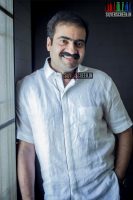
_MG_2468
“I prefer making a film sound as natural as possible, instead of stylised and unrealistic. But again, that depends upon the film. Films like Kaaka Muttai deserve a realistic treatment, while those like Ananthabhadram need a stylised treatment, like Santhosh Sivan’s camera. Commercial movies in Tamil are very easy to work on. But to work on a realist movie is a challenge.”
How do you keep yourself technologically updated?
“It’s not difficult. We have plenty of resources. Nowadays, we use Dolby Atmos, which is the cutting edge technology in sound. But unless you know how to use it creatively, there’s no point. Jigarthanda was the first film I worked on using Dolby Atmos. In Thalaiva, we did it in Dolby 5.1 and later converted it to Atmos. A new movie, Maya, is being done in Atmos.”
A move over the channel-based sound Dolby 7.1 and Dolby digital 5.1, Dolby Atmos helps produce object-based sound. Each speaker is treated like an object.
“But these days, in the West, many filmmakers are turning the clock back – they’re going back to analogue era, to retrieve that purity in sound mixing.”
Technology can be a curse too. How do you feel when you see people downloading films from the Internet and watching it on their phones and other gadgets?
“Very disappointed. We put in so much work in each movie to deliver that perfect theatre experience. I work for around 15 days, my assistants work day and night for many weeks. If people download the film via torrent and watch on in their gadgets and TV sets, well, we might as well have done it in stereo-mode. It’s heartbreaking to see our work going down the drain.”
What are some of your favourite films?
“I love films like Jurassic Park where they imagined and created the sound of a creature that we’ve never seen. They created it out of nothingness. Gravity is another movie that inspired me. It showed us how sound works in space, where there is no air. A blast happens in space, and you hear nothing. A man screams, and you hear nothing. Isn’t it an outstanding work?
“Sanjay Leela Bhansali’s Black, which had Rasool Pookutty as its audiographer, is another favourite. Baahubali has a great audio work too.”
What would you tell young aspiring sound technicians?
Recommended
“Sound designing and mixing is a job which is as much about technical craftsmanship as it is about creativity. Youngsters often lack patience. They’re eager to master the gadget, and forget about cinema. I would ask them to spend less time learning the theory, and more time learning the craft. I would tell them to assist a technician for some time, before venturing out as an independent technician.
“An audiographer should religiously learn the art of cinema. He should be able to understand the pace of films, the emotions and moods that need to be conveyed in each scene. I would ask them to be students of cinema, not just a technician.”
*****
The MR Rajakrishnan interview is a Silverscreen exclusive.
